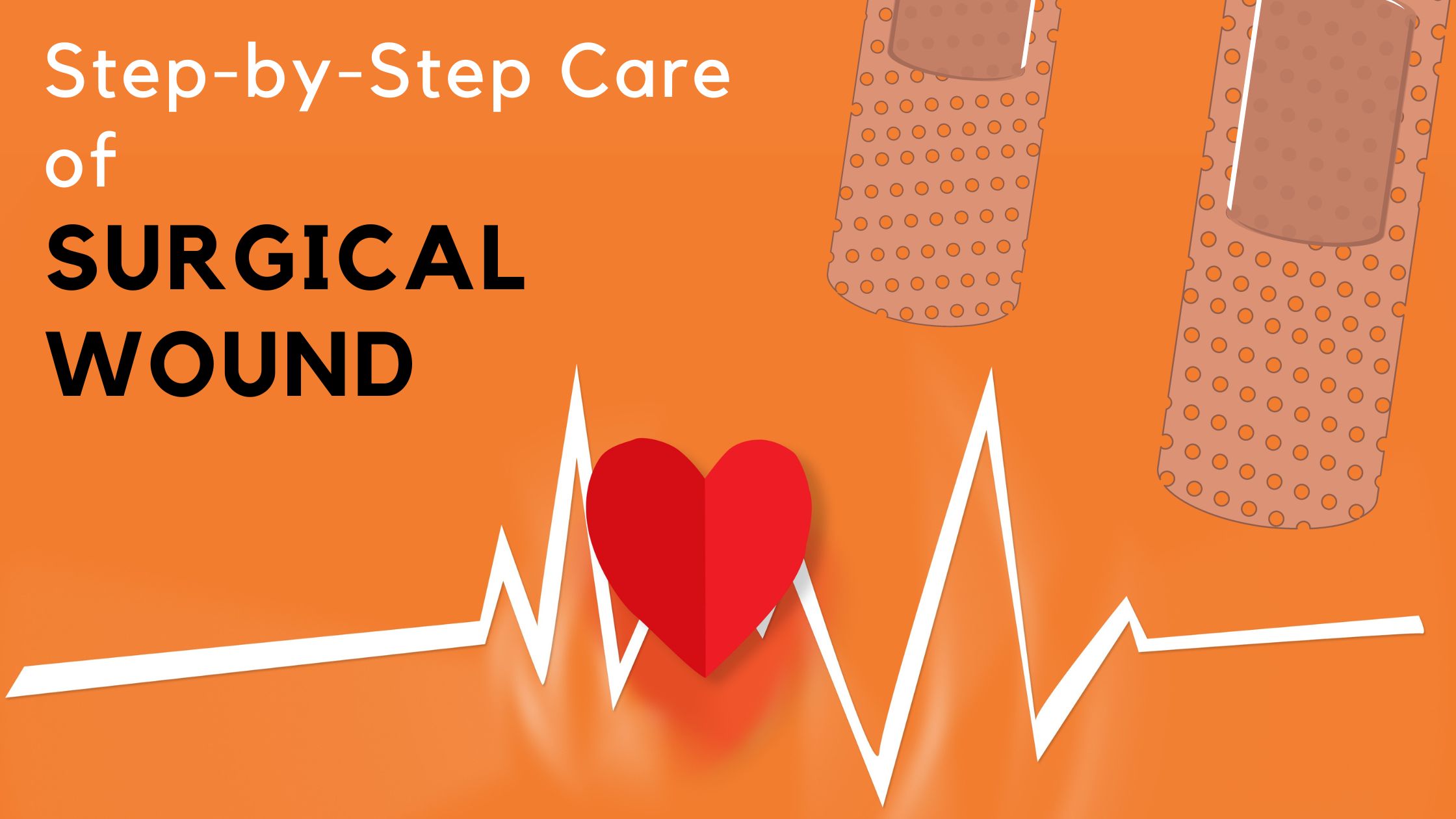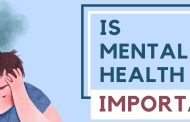INTRODUCTION
Hey there, I hope you’re doing good. Do you know why ‘care of surgical wound’ is necessary? In this blog, you’ll read about the meaning as well as the care of surgical wounds. Likewise, you’ll also read about the purposes and important articles for caring the surgical wounds. So, keep reading till the end of the blog.
Let’s get started….
Meaning
A surgical wound, also known as an incision, is a wound that has been deliberately produced during a surgical procedure by a cutting instrument such as a scalpel in a sterile environment. Surgical wound care is a nursing intervention that is primarily focused on the prevention of wound complications and the promotion of surgical wound healing.
Moreover, Surgical wounds can be classified into one of four categories, according to guidelines set by the American College of Surgeons.
Class I: Generally, these are clean wounds. Hence, they show no signs of infection or inflammation. For example, exploratory laparotomy, mastectomy, neck dissection, and splenectomy.
Class II: These are clean-contaminated wounds. Although the wound may not show signs of infection, there is an increased risk of becoming infected primarily due to its location. For example, cholecystectomy, small bowel resection, Whipple, liver transplantation, and gastric surgery.
Class III: Basically, a surgical wound is that where an outside object has come in contact with the skin is having a high risk of infection and is considered a contaminated wound. For example, rectal surgery, and penetrating wounds.
Class IV: These are dirty-contaminated wounds and include wounds that have been exposed to fecal material, e.g. perforated bowel, and peritonitis.
PURPOSE OF CARING SURGICAL WOUND
- To remove visible debris and devitalized tissue.
- To apply compression for hemorrhage or venous stasis.
- To protect the wound and surrounding tissue.
- To remove excessive or drying exudates.
- To promote wound healing.
- To allow inspection and assessment of the contaminated wound.
ARTICLES USED FOR CARING SURGICAL WOUNDS
- Sterile artery forceps- 1
- Mackintosh with draw-sheet
- Sterile thumb forceps- 1
- A pair of sterile gloves
- A pair of clean gloves
- Sterile dressing pack (1-2)
- Kidney tray
- Sterile saline
- Antiseptic lotion (if indicated)
- Adhesive tape
- Appropriate receptacle to collect waste
- Sterile bowl
- Sterile scissors
- Face mask
- Topical medication (optional)
- Screen
- Hand rub

STEP-BY-STEP CARE OF SURGICAL WOUND
Preprocedural Steps
- Firstly, identify the patient.
- Secondly, explain the purpose of the procedure to the patient and family/caregivers and reassure them. It will lessen their anxiety and promote patients’ cooperation.
- Thirdly, gather all the articles on a sterile trolley and keep it accessible near the bedside. An organized approach will save time and energy.
- Wash hands thoroughly and wears a mask and gown (optional) to prevent infection.
- Check the physician’s order for wound dressing and any specific instructions to clarify the type of dressing to be performed.
- Screen the patient’s bed to provide privacy to the patient.
- Assist the patient to a comfortable position that provides easy access to the wound area. It will provide comfort to the patient as well as ease in performing wound dressing.
- Adjust the patient’s clothes according to the site of the wound while covering the rest of the body. It will permit easy access to the wound and will also maintain warmth and dignity.
Keep reading the steps for caring the surgical wounds
- Place mackintosh and drawsheet on the bed beneath the area of dressing to prevent soiling of the linen.
- After that, don’t clean his gloves. Furthermore, remove the soiled dressings carefully‚ pulling tape toward the suture line to prevent overstretching of the wound.
- However, if the dressing is adherent to the skin, moisten it by pouring a small amount of normal saline. The moistened dressing is easier to remove.
- Meanwhile, inspect dressing for amount, the color of the discharge, or the presence of any foul odor. It will help to assess the wound healing process.
- Assess the condition of the surgical wound for redness and discharge to look for the signs of infection.
- Discard soiled dressing and gloves directly into the appropriate receptacles to prevent the spread of microorganisms.
- Lastly, Assess the incision for signs of healing. Describe the appearance of the patient
KEYWORDS
- Always clean from least contaminated to most contaminated.
- Record date as well as the time of dressing done.
- Always use an aseptic approach while providing surgical wound care to minimize the risk of infection.
- Above all, Care should be performed in a way that minimizes trauma to the wound.
- Particularly, Antiseptics are not routinely recommended for cleansing and should only be used sparingly for infected wounds.
Thank you
for reading our blog. Kindly, share it with the ‘nursing students’.
Blog by: Ms. Rumana Ali
Department of Nursing
CLICK HERE
for pursuing your graduation by sitting at your home.
Introduction
Hey there, I hope you’re doing well. As you all know, every woman needs extra care during & after the pregnancy period. That is what you are gonna read in this blog. ‘What does midwifery mean’, its advantages & disadvantages. Moreover, Why there should be a close liaison between Domiciliary AND Institutional Delivery Services?
Childbirth is a normal physiological process, but complications may arise because of that. Septicemia may arise as a result of unskilled and septic manipulations, and also tetanus neonatorum from the use of unsterilized instruments. The need for effective intranatal care is therefore indispensable, even if the delivery is going to be a normal one.
The emphasis is on cleanliness. It entails- clean hands and fingernails, a clean surface for delivery, clean cutting care of the cord, and keeping the birth canal clean by avoiding harmful practices.
Hospitals and health centers should be equipped for delivery with midwifery kits, a regular supply of sterile gloves and drapes, towels, cleaning materials, soap, and antiseptic solution, as well as equipment for sterilizing instruments and supplies should be there, There are delivery kits available with the items needed for basic hygienic for delivery at home, where a midwife with a midwifery kit is not likely to be present, The aim of good intranatal care are:
- Through asepsis
- Delivery with minimum injury to the infant and mother
- Readiness to deal with complications such as prolonged labour, antepartum hemorrhage, convulsions, malpresentation, proplase of the cord, etc.
- Care of the baby at delivery-resuscitation, care of the cord, care of the eyes, etc.
Domiciliary Care
Mothers with normal obstetric history may be advised to have their confinement in their own homes, provided the home conditions are satisfactory. In such cases, the Health Worker Female or trained ‘Dai’ may conduct the delivery. This is known as ‘domiciliary midwifery service’.
The advantages of the Domiciliary Midwifery service are:
- The Mother delivers in the familiar surroundings of her home and this may tend to remove the fear associated with delivery in a hospital.
- The chances for cross-infection are generally fewer at home than in the nursery/hospital and
- The mother is able to keep an eye on her children and domestic affairs, this may tend to ease her mental tension.
Domiciliary Midwifery is also not without disadvantages:

- The mother may have less medical and nursing supervision than in the hospital.
- The Mother may have less rest.
- She may resume her domestic duties too soon.
- She may not get a proper diet.
Strictly speaking, many homes in India are unsuitable for even a normal delivery. The argument that childbirth is a natural event and should take place at home does not guarantee that everything will be normal.
Since Seventy Four percent of India`s population lives in rural areas, most deliveries take place in the home with the aid of Female Health Workers or trained ‘dais’. Domiciliary outreach is a major component of intranatal health care.
The Female Health Worker who is a pivot of domiciliary care should be adequately trained to recognize the danger sign during the labor and seek immediate help in transferring the mother to the nearest Primary Health Centre or Hosptial. The danger signs are:
- Sluggish pains or no pains after rupturing membranes
- Good pains for an hour after rupturing of membranes, but no progress
- Prolapse of the cord or Hand
- Meconium–stained liquor or a slow irregular or excessively fast foetal heart rate
- Excessive show or bleeding during labour
- Collapse during labour
- A placenta not separated within half an hour after delivery
- Postpartum hemorrhage or collapse
- A temperature of deg thirty eight celsius or over during labour
So, in the end, we can say that there should be a close liaison between Domiciliary and Institutional delivery services.
Blog by: Remya Renjan Ma’am
______
|| Download GuruKPO Plus App for online learning. ||
Introduction:
Hey there, I hope you’re doing well. Undoubtedly, the covid-19 pandemic has raised the question of whether is mental health important? Likewise, In this blog, you’re gonna read about its meaning, its characteristics, and the signs of poor mental health.
Basically, Mental health is a state of balance between the individual and the surrounding world. Moreover, it is a state of harmony between oneself and others, and co-existence between the realities of the self and other people and the environment.
Meaning:
According to Karl Menninger (1947):
“Mental Health is an adjustment of human beings to the world and to each other with a maximum of effectiveness and happiness.”
Thus, mental health would include not only the absence of Diagnostic labels. Such as schizophrenia and obsessive-compulsive disorder (OCD) but also the ability to cope with the stress of daily living and freedom from anxiety. Also, an existing outlook towards and coping with those.
Why is mental health important
- A positive attitude towards self: Certainly, a positive attitude towards self includes an objective view of self including knowledge. Likewise, it includes acceptance of strengths and limitations. Though, the individual feels a strong sense of personal identity and security in the environment.
- Growth, development, and the ability of self-actualization: Both growth development and the ability for self-actualization indicators correlate with each level of development.
- Integration: Particularly, it includes the ability to adaptively respond to the environment and the development of the philosophy of life. Therefore, both of these help the individual to maintain anxiety in stressful situations.
- Autonomy: Basically, it refers to the individual’s ability to perform in an independent self-directed manner. Therefore, the individual makes choices and accepts responsibility for the outcomes.
- Perception of reality: It includes the perception of the environment without distortion as well as the cope for empathy and social sensitivity.
- Environmental mastery: Significantly, the environmental mastery indicator suggests that the individual has achieved a satisfactory role within the group, society, and environment. Moreover, he is able to love and accept the love of others.
Characteristics of Mentally Healthy persons:
- Firstly, the ability to make adjustments.
- Secondly, the senses of personal worth and feeling worthwhile and important.
- Solving one’s problems largely by his own efforts and making his own decisions.
- A sense of personal security and feeling secure in a group.
- Showing emotional maturity in his behavior.
- Developing a philosophy of life that gives meaning and purpose to his daily activities.
- Lastly, developing a capacity to tolerate frustration and disappointment in his daily life.
Visit gurukpo.com for FREE Study material
Nursing Signs of Poor Mental State:
Generally, symptoms of mental disorders vary depending on the type and severity of the condition.
Thus, some general symptoms that may suggest a mental disorder include:
- In younger children:
- Change in school performance
- Poor grades despair strong efforts
- Excessive worrying or anxiety
- Hyperactivity
- Persistent nightmares
- Persistent aggressive behavior
- Frequent temper tantrums.
- Adolescence/In older children:
- Abuse of drugs or alcohol
- Inability to cope with daily problems and activities
- Changes in sleeping and eating habits
- Excessive complaints of physical problems
- Skipping school, stealing or damaging property
- Intense fear of gaining weight
- A long-lasting negative mood is often along with the poor aptitude and thoughts of death.
- The frequent outburst of anger.
- In adults:
- Confused thinking, long-lasting sadness, or irritability
- Extreme high and low mood
- Excessive fear, worrying, and anxiety
- Social withdrawal
- Changes in eating and sleeping habits
- Strong feelings of anger
- Delusion or hallucination
- Increasing inability to cope with daily problems and activities
- Thoughts of suicide
- Many explained physical problems
- Abuse of drugs or alcohol.
Blog by: Laxmi Pharaswal
Department of Nursing
Thank you for reading the blog. Kindly, share this with everyone as everyone should be aware of their mental health. Keep Reading & Keep Sharing.




